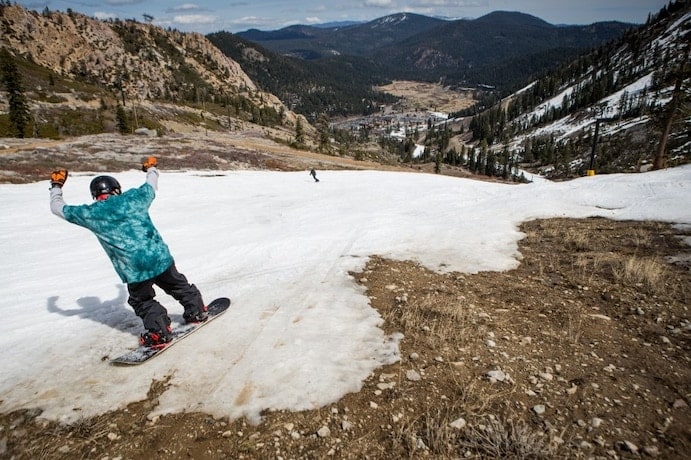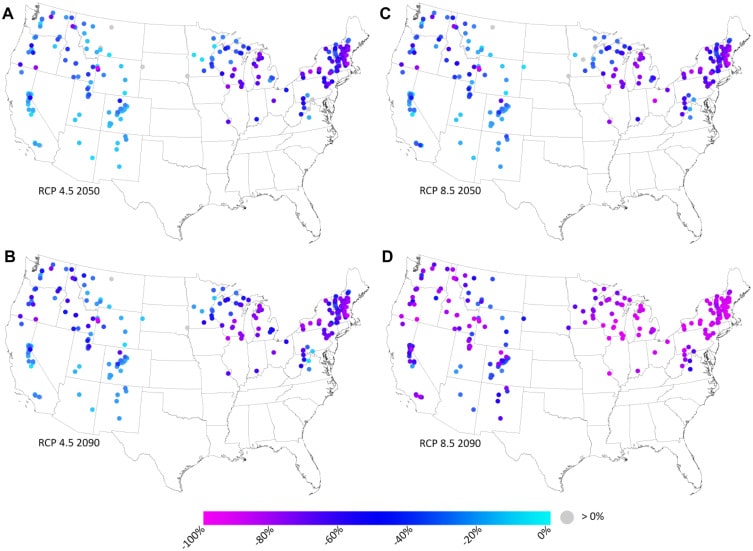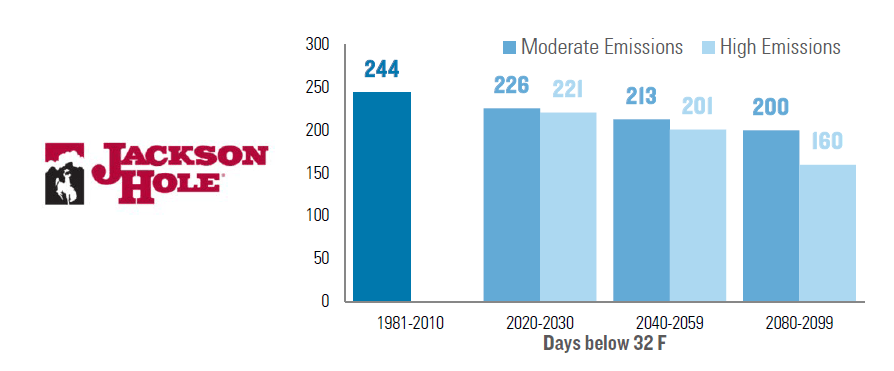
Climate change affects many aspects of winter, as globally increasing temperatures cause fewer below-freezing days. Scientists combined existing climate models and emission scenarios and found that the length of winter could be halved by 2050.
Cameron Wobus is a research scientist who works for the Climate Division of the Environmental Protection Agency. Wobus led the study, Projected Climate Change Impacts on Skiing and Snowmobiling: A Case Study of the United States. Wobus’s study combined five different climate models with a moderate emissions scenario and a high emission scenario.

The high emission scenario predicts what will happen to winter and the snowpack if there are no efforts to reduce greenhouse gas emissions. The moderate emission scenario shows the outcome if the Paris Climate Agreement is followed. Both the moderate emission scenario and the high emission scenario found that the length of winter in some locations could be halved by 2050, though the high emission scenario showed a more dramatic change.
The Climate Impact Lab estimated climate change’s effect on the number of days below freezing each winter. Their results parallel those of Wobus, showing a reduction in the number of days below freezing. For example, in Truckee, CA, the number of days below freezing is projected to drop from 41 days to 20 days by the end of the century under the moderate emissions scenario.

Jackson Hole, WY is expected to drop from a historical average of 244 days below freezing to 200 days in the moderate emissions scenario. This illustrates the role of altitude in regional variations in climate. As climate change causes an average increase in global temperatures, lower elevations will see more rain and less snow. Because higher elevations have a lower average temperature, higher elevation resorts will not experience a 50% reduction in days below freezing.
Jackson Hole has a historical average winter temperature of 15℉ that is projected to rise to 24℉, corresponding to a 35% reduction of days below freezing. Resorts in the Rocky Mountains will experience less of an impact because of their higher elevation, however, resorts in the Northeast will experience a greater impact due to a lower average altitude.
The Sierra Nevada in California is projected to experience a 60% reduction of snowpack throughout the range and the elimination of a snowpack below 6,000 feet. Instead of receiving winter precipitation as snow, the Sierra Nevadas will see more rainfall as a result of climate change.
References:
Climate Impact Lab. (2018, February 8). America’s Shrinking Ski Season. Accessed June 2, 2020.
Wobus, C., Small, E.E., Hosterman, H., Mills, D., Stein, J., Rissing, M., Jones, R., Duckworth, M., Hall, R., Kolian, M., Creason, J., Martinish, J. (2017). Projected climate change impacts on skiing and snowmobiling: A case study of the United States. Global Environmental Change, 45, 1–14. doi:10.1016/j.gloenvcha.2017.04.006.